#regency history
Explore tagged Tumblr posts
Text
Wow, @visorforavisor... what an incredibly well-researched and thoughtful response. Thank you so much, this is exactly the sort of addition I hoped someone would care enough to add and I really appreciate you sharing your thoughts. Good luck with your degree, with such thorough knowledge I'm sure you'll go far!
I wasn't familiar that a chemisette could be made of such thick material but I love it actually, that's exactly the thing I would have worn if I was around back then! I think the fact it would perhaps have been a couple of decades out of fashion is fine because the Bennets are not particularly wealthy and are perhaps a little out of the loop regarding the latest trends.
The cut of the coat and particularly the shoulders really stood out to me as quite a lot more masculine than I was used to seeing on a lady from this era and I think that is still my main issue with it, despite all of the wonderful examples you provided of ladies in similar coats with lapels! I suppose clothing wasn't as gendered as we might expect and there was some leeway with ladies incorporating some more 'masculine' elements in their dress.
The key, as you said, is absolutely to wait and see. They aren't bad costumes at all, but perhaps not quite what I have in mind when I think of Pride and Prejudice. I am very picky but it's only because I care! I love the curls too and agree with you regarding Kitty, it's exciting to see some diversity of the typical period drama body types! I hope the costuming is just a way to distinguish Elizabeth from her sisters and isn't related to how she will be portrayed. Thank you again!
I know that I cannot judge an entire adaptation from one single photo but after getting the first look of Emma Corrin as Elizabeth Bennet in the Netflix version of Pride and Prejudice I am terrified that this production is going to turn Elizabeth into some sort of 'not like other girls' tomboy, when in the novel she is nothing of the sort. This interpretation of Elizabeth's character is quite a common misconception and I believe it though perhaps did not originate with, but was certainly popularised by the 2005 adaptation.
(Disclaimer that I am not a fashion historian before I share my thoughts! But I have done quite a lot of reading into the era and these are my observations, feel free to chip in with your own!)
Compare the costume of Elizabeth (L) to Jane (R). The coat in particular is very masculine, especially since it has lapels. I struggle to believe that such a garment would ever be worn by a Regency lady:
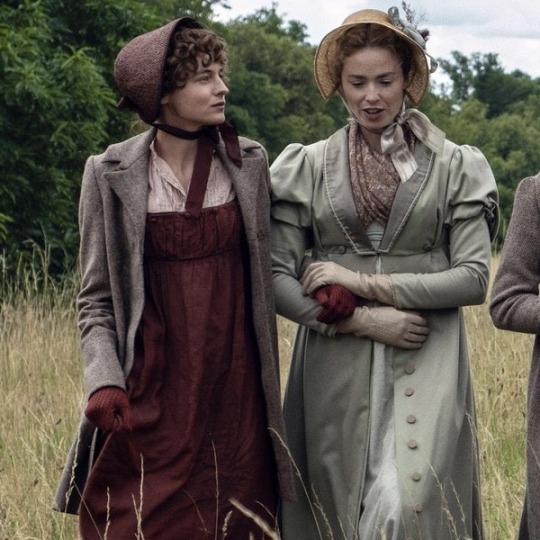
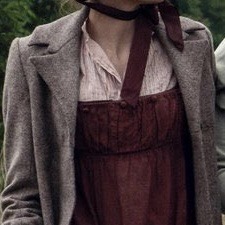
Furthermore, Elizabeth is wearing something beneath her dress which almost appears to be a men's shirt with a collar? Though ladies would wear dresses with revealing necklines, in this era, dresses with:
'lower necklines [were] filled in with a fichu, scarf, lace, or chemisette.'
(via this article with more details about Regency morning dress)
All of the aforementioned are made of much daintier, lighter materials and even a chemisette (which could have a collar as this article demonstrates) has a rather different look than the piece of material that is peeking up from beneath Elizabeth's dress.
Fashion rant over, now I want to return to the text to demonstrate why any sort of tomboyish depiction of Elizabeth Bennet is not supported in the original novel.
Firstly, Elizabeth is repeatedly shown to engage in feminine pursuits. In fact, at the beginning of Chapter 2, shortly before her very first line of dialogue, she is described thus:
'Observing his second daughter employed in trimming a hat...'
Indeed, as I have previously discussed here, throughout the novel Elizabeth is repeatedly shown to be engaged in sewing, just like all other young girls of her age and class. We can therefore deduce that this activity is most likely one of her favourite ways of passing the time, rather than reading books (despite what fanon may portray).
Elizabeth also plays piano, and though she admits that her playing does not have 'the same force or rapidity' as other women's in Chapter 31, it is because she has not practised enough at that particular pursuit as she enjoys a variety of activities; she is sociable, enjoys walking and sewing, as I have previously established. Her lack of perfect technical application at the piano shows that she is not like Mary and is a far-more well rounded individual (which is a key lesson in the novel!). Even despite her lack of practice, Elizabeth's playing is good enough to be acceptable in company, which shows she must have some natural aptitude and affection for playing.
However, I think the primary scene which leads people to conclude that Elizabeth Bennet must be a tomboy is because she walks to Netherfield to visit Jane. Which conveniently ignores the fact that we are explicitly told in Chapter 7 that walking was her only option:
'Elizabeth, feeling really anxious, was determined to go to her, though the carriage was not to be had; and as she was no horsewoman, walking was her only alternative.'
It is obvious that Elizabeth would rather walk than ride on horseback because she does not enjoy it, which does not seem especially tomboyish to me. You would think any boisterous young woman who is desperate to get away from ladylike pursuits would always be out riding a horse? But that is not the case. If anything, this part of the novel shows to us the depth of Elizabeth's affection for her sister Jane. That she would risk impropriety and walking through mud to visit her sick sister is testament to how little Elizabeth cares how she is perceived vs the love she has for her family.
Ultimately, although Elizabeth resembles her father in terms of her wittiness more than any of her other sisters, that shared trait does not a tomboy make (women can be funny and feminine!) she is repeatedly shown to enjoy activities typical of her gender and class.
Elizabeth Bennet is timeless and relatable for so many reasons and her femininity does not need to be diminished in order to make that more obvious to modern audiences. I really hope that the Netflix series does not go down that route for her character because I think that it would be a tremendous shame.
(NB: I know that Emma Corrin is non-binary and I fully respect them and their identity. I just care an awful lot about the character of Elizabeth Bennet and how she is portrayed and perceived because I fell in love with her in the novel and she is perfect precisely as Jane Austen wrote her!)
#good analysis#GREAT analysis in fact#fashion history#regency history#history#pride and prejudice 2026#netflix pride and prejudice#autistic people with special interests in very niche areas of history are SOOO powerful we really could run the world#as i said at the end i'm only picky because i care. i hope this is a brilliant adaptation which comes close to the novel!#because the novel will always be the best!!#but i am here for people to try!!
204 notes
·
View notes
Text
Was it possible to get finger basted inside a regency carriage?
A PowerPoint presentation by esme.louisee
6K notes
·
View notes
Text
Friends! Once again I am looking for BOOKS. HISTORY BOOKS!!
I want to look into the word of Georgian/Regency era zoology, but I've no idea where to start. Does anyone have any recs for books on the topic, or more broadly on women in science in this era?
I'd quite like something like an overview, or even recs for studies/books/articles from the time. THANKS Y'ALL.
94 notes
·
View notes
Text
‘I could fix him’ no you cannot, he cannot even ‘fix’ himself.

#lord byron#history#history memes#early 19th century#19th century#regency#regency history#podcasts#bisexual#queer#lgbtq+#bi history#bisexual history#queer history#19th century history#byronic hero#percy bysshe shelley#mary shelley#john polidori#Clair Clairmont#Anne Milbanke#ada lovelace#history is a circle#literary history#tropes#romantic era#romanticism
5 notes
·
View notes
Note
Can you shed some light on how and why Maria's infidelity end up on the paper? I have so many questions. Was that normal? Was it like, celebrity gossip today? Would the Rushworths wealth make them well known enough for their problems to make newsworthy gossip? Or was it like a crime report? Like how a robbery might be reported? Did Rushworth have anything to do with it? Because it sounds humilliating for him, but I'm thinking maybe he'd want evidence for the divorce?
I follow a Facebook group that shares snippets of the paper from the Regency and you can find everything! Like even things that today we would think of as very personal details. So yes, it was normal. For example:
Notice of a Marriage published in The Examiner August 27, 1809
On Monday at Bath, —----- Hartley, Esq., just come of age, and into possession of 6 to 8,000l., per annum, landed property, to Miss Watts, the daughter of the Parish Clerk of St. Michael’s, whose celebrity as a cobbler stands unrivalled. The young man has settled 300l., per annum on his father-in-law, and 600l., per annum on his wife. The ceremony commenced at eight o’clock, the bridegroom had no sooner given his troth than he was taken with fainting fits, and it was not till half past eleven the service was renewed. Shortly after, his uncle arrived to forbid the marriage. On leaving the church they were greeted by the populace.
(This also answers the question of how everyone knew everyone's incomes)
From August 1, 1811 London Chronicle:

[About two years ago the wife of Mr. Badden, a corn-dealer, in the neighborhood of Kingston, was lost from her home, and supposed to have been drowned in the returning from Hampton Court, her bonnet having been found in the river; and her husband and relatives mourned her loss in the usual manner; but on going through Malling, in Kent, last week, to the surprise of Badden, his supposed lifeless rib* presented herself, mounted on the top of a baggage-waggon, with a chopping boy at her breast, in the character of a corporal's wife, with whom it turned out she had eloped from Kingston, and to whom she was afterwards betrothed. Badden had got married also, and it is not apprehended that the lawyers will have any trouble on the occasion. *rib is a Biblical reference, Eve was formed from Adam's rib]
Marriage notice from the 4 February 1810 Examiner

[At Monkwearmouth, Mr. R, taylor, to Miss D. of Southwick. No sooner was the ceremony over, than the fair one seemed to demur, and strange as it may appear, she has not yet deigned to place herself in that situation in which a man's rib ought to be - in plain English, she has not gone home.]
Here is a crime from the London Chronicle Jan. 7, 1809:
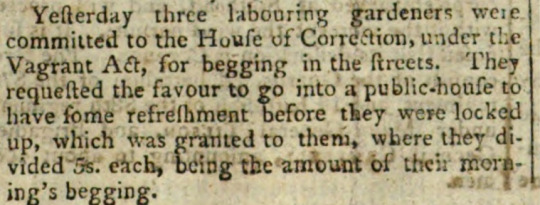
[Yesterday three labouring gardeners were committed to the House of Correction, under the Vagrant Act, for begging in the streets They requested the favour to go into a public-house to have some refreshment before they were locked up, which was granted to them, where they divided 5s. each, being the amount of their morning's begging.]
I think the main evidence against Maria was that she left the marital home, so newspaper reports probably wouldn't be necessary. I would imagine Rushworth would rather not have people talk about it, but it sounds like everything became very public.
Also, Rushworth was certainly rich enough to qualify for celebrity gossip-type coverage and Maria was the daughter of a baronet.
64 notes
·
View notes
Text
Oh Gods I love how much KJ Charles can make me care about characters and couples that I am initially deeply unconvinced by.
I mean, having now read the Society of Gentlemen books...
Really wasn't sure about Julius at first. Absolutely adore him by about a quarter of the way through, however much I was exasperated by his initial not getting Harry's need to resolve the different sides of himself. By the end: wanted to protect him oh Gods. Also if that man is neurotypical I will eat my hat.
DAMN YOU KJ CHARLES YOU MADE ME CARE SO SO SO MUCH ABOUT DOMINIC FREY HOW ABSOLUTELY DARE YOU. UGH. Only valid Tory in anything ever. (Sorry Julian from Ghosts fans. ;-) )
But the actually hardest sell for me was Sir Richard Vane because omfg he's absolutely insufferable (and also because as aforementioned once I started seriously caring about Dominic Frey, being pissed off at Richard is inevitable). I was still rooting for Richard and David Cyprian by halfway through their book. By the end... well. I still reckon David is way too good for Richard but at least Richard knows it, and oh my life he really does do a hell of lot of changing for the better. Respect. <3
Can I also say though: fuck everyone who thinks the Regency was a utopia. I love KJ Charles for writing queer romances set during the Regency that absolutely get how horrifying it was on so many levels. <3
12 notes
·
View notes
Text

"The Church of St. Mary le Bow in Cheapside, London." Printed for Bowles & Carver. 1757.

"A View of Cheapside, in the City of London." Engraved by T M Baynes from an illustration by W Duryer. Published by John Hudson. 1823.

No. 157, New Bond Street, London. In A Visit to the Juvenile Library, Eliza Fenwick. 1805.

Exterior of St. Paul's Cathedral: from "Langley & Belch's New Map of London." 1812.

Interior of St. Paul's Cathedral, in Microcosm of London vol. 3, Ackerman. 1809.

Illustration of Inner Temple Garden. 1809.
2 notes
·
View notes
Text
Social Media in the Olden Days
First, an apology Though this is meant to be a quarterly blog, last December completely got away from me. Apologies! I’m back this quarter to talk about political memes, and since I write historical fiction, the old style ones known as caricatures. Making Fun of Famous People Before there were social media platforms, there were print shops like the one depicted above. And before there were…
0 notes
Text










Yet another selection of some of the better names I've come across in Regency era newspapers recently.
#names#history#regency#regency era#character names#writing inspiration#1790s#1800s#1810s#gentleman cadet forbes macbean may be my personal all-time favorite from this series#regency names
6K notes
·
View notes
Text
Lady Avely's Guide to Truth and Magic | ARC Review
Thank you to Parkerville Press and Netgalley for the review copy in exchange for an honest review. This does not change my opinion in anyway. Book: Lady Avely’s Guide to Truth and Magic (Matronly Adventures 1) by Rosalie OaksRelease Date: February 16th 2024Tags: Fantasy | Historical Fantasy | Elderly MC | Widow | Magic | Murder Mystery Trigger/Content Warnings: Violence | Murder | Mentions of…

View On WordPress
#elderly mc#fantasy#Historical Fantasy#Lady Avely&039;s Guide to Truth and Magic#Magic#Matronly Adventres#Murder Mystery#regency history#Rosalie Oaks#TW: murder#TW: Violence#widow
0 notes
Text





Dress
c. 1811-1814
London Museum
#1810s#1810’s#regency#regency fashion#regency era#19th century#fashion history#dress history#history of fashion#frostedmagnolias
2K notes
·
View notes
Text
I know I turned this scene into a joke about how gorgeous Colin Firth is... but the pineapple that lurks in the background of the Netherfield ball when Mr Collins is yapping to Mr Darcy is such a subtle detail that I really appreciate!

The wealthy at this time in Britain were a little bit obsessed with pineapples. Depictions of them featured as decoration in country homes, in political cartoons, paintings and crockery (warning: Margaret Thatcher jumpscare🥴 but you can read more about that here and here).
But to have an actual pineapple on display during a large social gathering such as a ball? That was really showing off.
Especially when you consider it cost £150 (or approx. £28,000 today) to buy the initial plant, build a hothouse to grow them in and run it... with no guarantees they'd grow given the climate was not exactly suited for growing pineapples! It was a huge risk.
All this meant that pineapples were so scarce that they became incredibly sought after. Naturally, rich people did silly rich people things to acquire them and show them off... perhaps they were the NFTs of their day?
A single pineapple was valued at £60 (approx. £11,000 today). Given the cost and effort of acquiring one, you'd think people would be keen to tuck in and sample this exotic fruit? Nope. Pineapples were not eaten! Of course not! They were displayed on plates surrounded by other less prestigious fruit during dinner parties and other social occasions, usually until they rotted. They could be rented for special occasions too. Such was their value that naturally they became the target of thieves and some pineapples even had their own security guards!
In the end, colonialism (because all British history eventually returns to that) meant that pineapples could be imported cheaply and their status was devalued when the working classes could afford to buy them.
But next time you watch Pride and Prejudice (1995), pay attention the scenes in the dining room at the Netherfield ball and look out for the pineapple... which is the second prickliest thing in shot (behind Mr Darcy). 🍍
Also... just to throw in a little etymological rant... as a treat: I know most of the rest of the world calls them ananas... but in English (and other languages) all fruit used to be called an apple of some sort. We just never got around to changing pineapple.
The humble potato has some peculiar names in other languages... looking at you, French and Dutch with your pommes de terre (apples of the earth) and aardappels (earth apples)... and then there is also the Italian for tomato... pomodoro... (golden apple) when most the rest of the world call them some version of the Nahuatl 'tomatl'.
Languages are just funny like that and that's why I find them fascinating!
#pride and prejudice#jane austen#pride and prejudice 1995#mr darcy#pride and prejudice 95#regency history#british history#history#my analysis#the horrible histories sketch about this lives rent free in my brain to this day#but i do appreciate this detail... i think you can tell the people involved in making it did put in the effort because they CARED#you can't really fake that passion and it pleases me#but that does make Some Moments all the more frustrating#i'm still gathering the energy to rant about a certain scene involving a diseased body of water#trust me i've seen it up close. it would be great for the chocolate river in an adaptation of charlie and the chocolate factory#NASTY. very bad vibes.#but yes more little details like this in period dramas pls for the history nerds amongst us#also 'other less prestigious fruit'.... me when i'm with my much cooler queer friends#pride and prejudice 1995 details
429 notes
·
View notes
Text

“If you are orphaned, then so am I, and you will never know a lonely day again, as long as I draw breath.”
#me seeing regency outfits: but what if it was medieval#this is my prize for the d20 rally at MCM London next week#dimension 20#a court of fey and flowers#acofaf#kp hob#delloso de la rue#brennan lee mulligan#oscar montoya#d20 fanart#dimension 20 fanart#medieval art#illuminated manuscript#medieval#medieval history#medievalist#my art
1K notes
·
View notes
Text
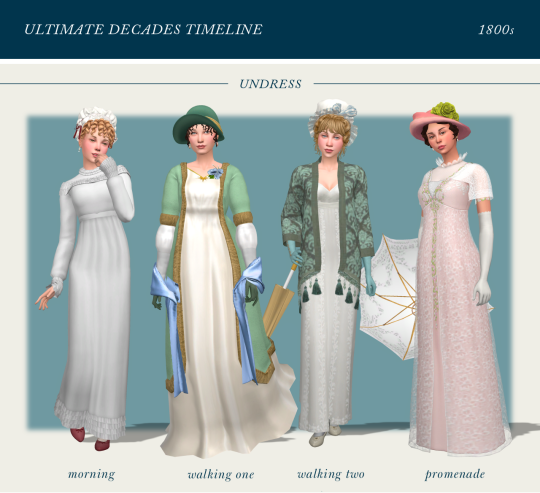
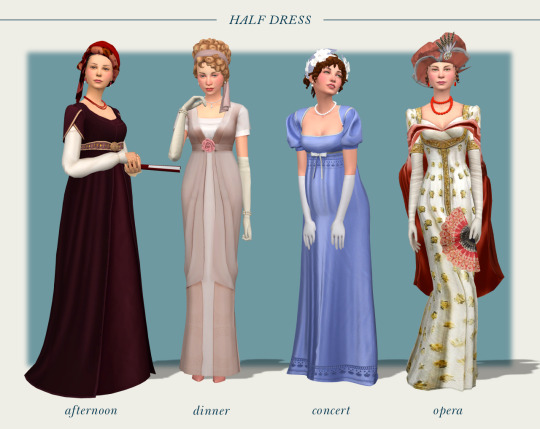
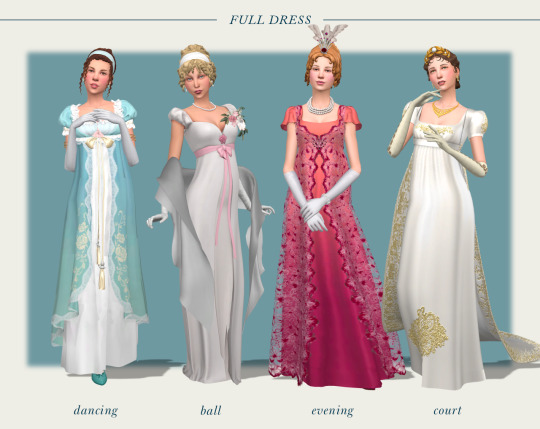
This is part one of the 1800s female lookbook, you can find part two here.
The simplification of clothing that had begun in the late 18th century carried over into the early 1800s. The chemise dress made popular by such fashion icons as Marie Antoinette evolved into a neoclassical style that revealed the natural body, with a high waist and lightweight fabrics. Interest in classical antiquity had been growing throughout the second half of the 1700s following the excavations of Pompeii and Herculaneum, and this reached its peak in the early 1800s with fashions that hearkened back to the styles of ancient Greece and Rome. White became the colour de jour thanks to the incorrect assumption that ancient sculptures were carved in white marble, with pops of colour added through accessories such as shawls and hats. Dresses were long and typically pooled on the floor, with swathes of fabric echoing the ancient inspiration.
While clothing became more simplified, the expectations surrounding modes of dress were relatively complex. Increasing wealth among the middle class meant that frequently changing fashions became accessible to many women across social strata. Together with the sinking costs of cloth and clothing due to industrial manufacturing, this led to ladies changing their clothes a number of times throughout the day. With this came societal guidelines about what and when to wear certain dresses. There were three main ensemble modes - undress, half dress and full dress.
Undress essentially meant 'casual' dress and was appropriate for activities that occurred from the morning until the afternoon, including gowns that were worn by ladies within the home known as morning dresses. Undress was suitable for walking and promenading, which were social occasions for those to see and be seen in fashionable areas. Half dress sits between the informality of undress and formality of full dress. In modern terms, you could compare it to 'business casual' or 'cocktail' attire. Fabrics were richer than undress gowns and necklines were more revealing. Full dress was reserved for evening and entailed all the extravagant detail that late Georgian and Empire style allowed for. Headwear was more elaborate, trimmings more detailed and textiles more luxurious. CC links under the cut.
You can find more of my historical content here:
1300s ✺ 1400s ✺ 1500s ✺ 1600s ✺ 1700s ✺ 1800s

MORNING
Cap | Hair | Earrings | Dress | Hose (Base Game) | Shoes
WALKING ONE
Hat | Hair | Earrings | Bouquet | Dress | Shawl (Sims Finds) | Gloves (Curseforge)
WALKING TWO
Cap | Hair | Cloak | Dress | Gloves (Curseforge) | Parasol | Hose (Base Game) | Shoes
PROMENADE
Hat | Hair | Earrings (TSR) | Chemisette | Dress | Gloves | Parasol
AFTERNOON
Turban | Earrings (TSR) | Necklace | Dress | Sleeves (TSR) | Fan
DINNER
Hair | Earrings (TSR) | Necklace (TSR) | Dress (retired - direct download) | Gloves | Bracelets | Shoes (TSR)
CONCERT
Headpiece | Hair | Earrings | Necklace (TSR) | Dress | Gloves
OPERA
Hat | Hair | Earrings | Necklace | Dress | Shawl | Gloves | Fan
DANCING
Hair | Earrings (TSR) | Dress | Arm Cuffs (TSR) | Gloves | Hose (Base Game) | Shoes
BALL
Hair | Earrings | Necklace (Base Game) | Bouquet | Dress (TSR) | Gloves | Shawl (TSR)
EVENING
Headpiece | Hair | Necklace | Dress | Gloves | Bracelet | Shoes
COURT
Tiara | Hair (TSR) | Earrings (TSR) | Necklace (Luxury Party) | Dress | Gloves (Curseforge)
With thanks to some amazing creators: @inlovewithregencyera @ravensim @buzzardly28 @chere-indolente @vintagesimstress @joshseoh @dancemachinetrait @rustys-cc @marsmerizing-sims @glitterberrysims @batsfromwesteros @leeleesims1 @joliebean @simsonico @belaloallure3 @satterlly @dustyratt @sentate @neutralsupply @funkyllama @la-sims-society @byregalia @blahberry-pancake @lilchamomil @pitted0live
#ultimate decades challenge#1800s#1800s cc#georgian#georgian cc#french empire#ts4 historical#ts4 history cc#sims 4 historical#ts4 decades challenge#sims 4 decades challenge#the sims 4#ts4 cc cas#historical lookbook#ts4 lookbook#ts4 history challenge#georgian fashion#empire fashion#sims 4 lookbook#regency
574 notes
·
View notes
Text
Gentlemen’s Regency Era Portraits
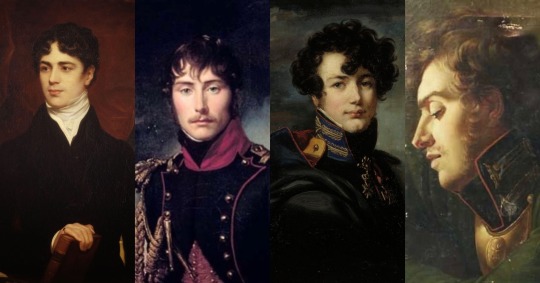
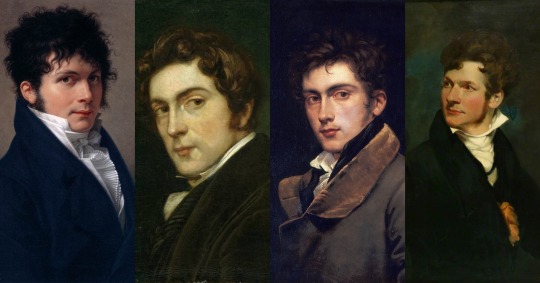
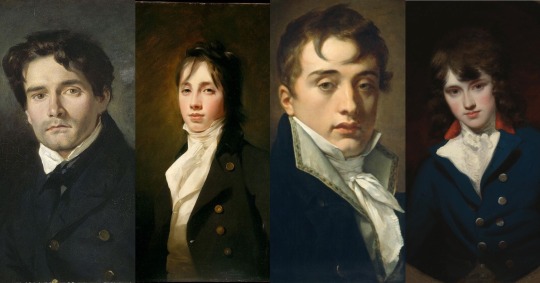
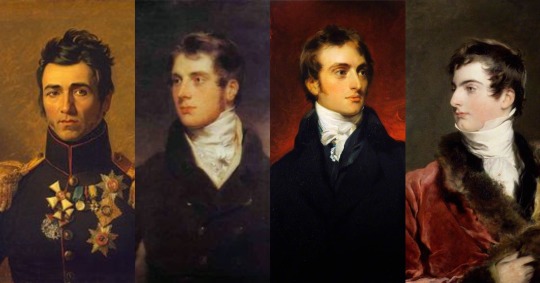
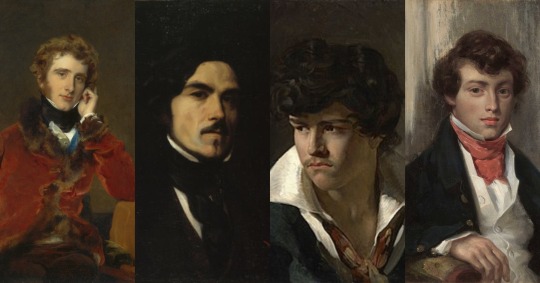
#regency era#regency fashion#regency style#historical fashion#history#portraits#art#style#fashion#painting#paintings#romanticism#romantic era#regency#bridgerton#19th century#england#aesthetic#dark academia aesthetic#clothing#menswear#menstyle#mensfashion#romantic#1800s#jane austen#napoleonic era#napoleonic wars#empire era#georgian era
2K notes
·
View notes
Text

~ Barbara Krafft, Portrait of Anna Maria Lergetporer (1811) (detail)
via historicalbeauty
#barbara krafft#painting#fine art#art history#art#old paintings#painting detail#art detail#austrian art#austrian artist#austrian painting#early 19th century#19th century art#19th century painting#portrait#portraiture#portrait painting#women in art#fashion history#historical fashion#history of fashion#regency fashion#regency painting#regency art#regency#regency aesthetic#1810s#1810s fashion#1810s art#1811
951 notes
·
View notes